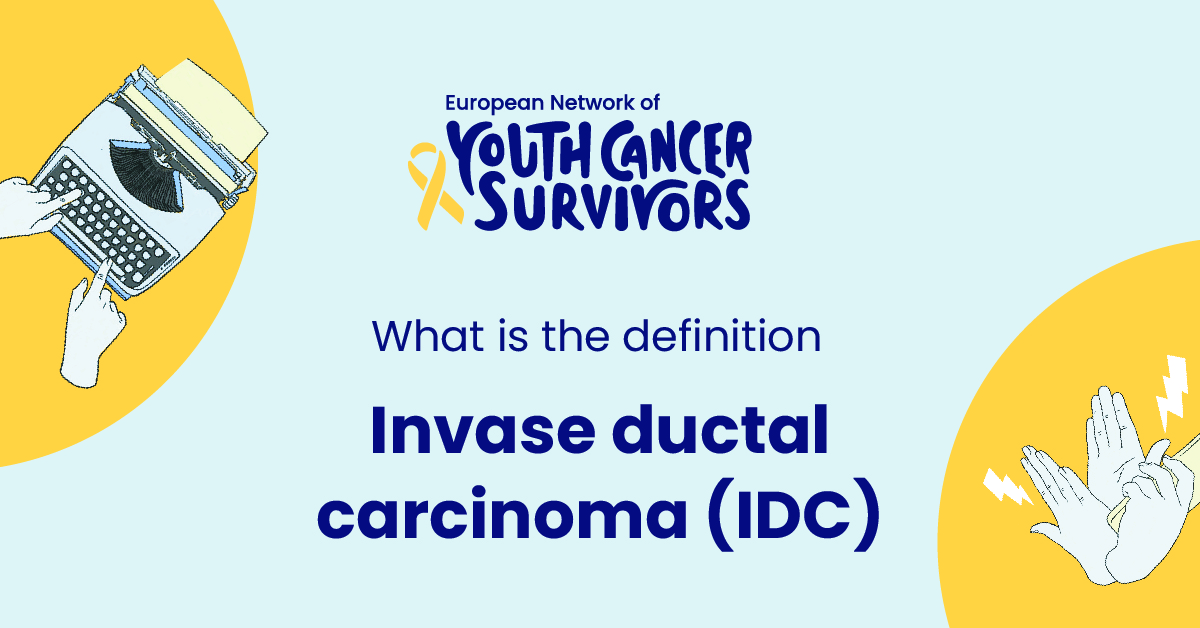
Early Detection and Understanding of Invasive Ductal Carcinoma
Breast cancer represents a significant global health concern, compelling the need for increased awareness, early detection, and innovative treatment methods. Among the numerous types of breast cancer that exist, Invasive Ductal Carcinoma (IDC) is the most common, making up about 80% of all breast cancer diagnoses. This article provides an in-depth look into IDC, highlighting its causes, symptoms, screening and diagnostic methods, as well as potential treatment options and coping strategies.
I. Introduction
A. Brief Background on Breast Cancer
Breast cancer is the uncontrolled growth of abnormal cells in the breast, leading to the formation of a tumor that can spread (metastasize) to other parts of the body. While it primarily affects women, men can also develop breast cancer. Initialization of public breast cancer awareness campaigns has contributed to improved survival rates over the past few decades. Still, the disease remains a leading cause of cancer death among women worldwide.
B. Importance of Early Detection
Early detection of breast cancer, particularly IDC, significantly improves prognoses and survival rates. Regular breast self-exams, clinical exams, and mammograms are critical components of early detection, enabling treatment to begin before the cancer spreads to other body parts.
II. Understanding Invasive Ductal Carcinoma (IDC)
A. Definition
Invasive Ductal Carcinoma, also known as Infiltrating Ductal Carcinoma, is a type of breast cancer that begins in the milk ducts and invades surrounding breast tissue. From there, it can metastasize to other parts of the body through the lymphatic system and bloodstream.
B. Why IDC is Known as the Most Common Type of Breast Cancer
IDC accounts for about 80% of all breast cancer diagnoses. Its prevalence can be attributed to the extensive network of ducts in the breast, where cancerous growths often start. Additionally, numerous subtypes of IDC exist, contributing to its overall prevalence.
C. Understanding the Invasiveness of IDC
IDC’s invasiveness refers to its ability to penetrate beyond the milk ducts into surrounding breast tissue and potentially travel to other body parts. This invasive property is what distinguishes IDC from Ductal Carcinoma In Situ (DCIS), which remains confined within the ducts.
III. Illuminating the Causes and Risk Factors
A. Genetic Factors
Genetic mutations inherited from a parent, particularly in the BRCA1 and BRCA2 genes, dramatically increase the risk of developing IDC. However, most cases of IDC occur randomly due to DNA changes during a person’s lifetime.
B. Lifestyle-Related Factors
Certain lifestyle elements, including alcohol consumption, obesity, physical inactivity, and hormone use, can increase IDC risk.
C. Hormone-Related Causes
Extended exposure to estrogen, either through early menstruation or late menopause, increases the likelihood of developing IDC. Furthermore, hormone replacement therapy during menopause can raise IDC risk.
D. Environmental Factors
Certain environmental factors, like radiation exposure or carcinogen contact, may also contribute to IDC development.
IV. Symptoms and Signs of IDC
A. Physical Symptoms
Physical signs of IDC can include a breast lump, nipple discharge, inverted nipple, changes in the breast’s size or shape, and skin changes such as dimpling or scaling.
B. Symptoms Not Visible to the Naked Eye
Many symptoms, such as tiny calcifications, are often not visible or palpable. These can only be identified through technological screening methods, reinforcing the importance of regular mammograms.
C. Importance of Regular Check-ups and Monitoring
Regular breast exams and screening tests are crucial for early detection, especially since early-stage IDC might not cause any symptoms. Regular doctor consultations also enhance the probability of noticing changes in the breast and promptly reporting them.
Get to know us better
If you are reading this, you are in the right place – we do not care who you are and what you do, press the button and follow discussions live

V. Diagnostic Methods for IDC
A. Mammogram and its Role
Mammography, an X-ray technique, is the most common way to screen for breast cancer. It helps detect abnormalities in the breast before they become large enough to feel.
B. Biopsy and How it Helps Identify IDC
When a mammogram reveals suspicious findings, a subsequent biopsy is done to investigate further. Doctors extract a small tissue sample from the suspected area, which is then examined under a microscope to confirm or rule out cancer.
C. Advanced Imaging Techniques
Besides mammography, other imaging tests like breast ultrasound, breast MRI, or a PET scan may be used to evaluate the size and extent of IDC.
D. Initial Stage Determination
Once IDC is diagnosed, staging is crucial to determine the cancer’s extent and plan for the treatment. Staging assessments include a physical exam and additional imaging tests.
VI. Treatment Options for IDC
A. Surgery: Lumpectomy vs. Mastectomy
Surgery is often the first line of treatment for IDC. A Lumpectomy involves removing the tumor and a small margin of healthy tissue. A Mastectomy entails removing the entire breast. The best choice depends on the IDC’s size and stage.
B. Radiotherapy: When & Why its Used
Radiotherapy uses high-energy rays to kill cancer cells. It’s typically used after surgery to kill any remaining cancer cells, reducing the risk of recurrence.
C. Chemotherapy: Its Role in Shrinking Tumors
Chemotherapy uses powerful drugs to kill cancer cells and shrink tumors. It can be administered before surgery to shrink large tumors or afterward to kill remaining cancer cells.
D. Hormone Therapy: An Effective Treatment for Hormone-Receptor-Positive IDC
Hormone therapy works by blocking hormone receptors or lowering hormone levels in the body, inhibiting the growth of hormone receptor-positive breast cancers.
E. Targeted Therapies: The Future of IDC Treatment
Targeted therapy drugs work by specifically attacking cancer cells with certain characteristics, leaving healthy cells unharmed. They provide a promising avenue for future breast cancer treatment advancements.
VII. Coping with IDC: Emotional Support and Self-Care
A. Mental Health Considerations
A diagnosis of IDC can exact a tremendous emotional toll. Thus, emotional and mental health should be prioritized. Professional counseling or joining a support group can offer immense assistance.
B. Support for Patients and their Families
Support from family members, friends, and healthcare professionals can alleviate the emotional burden of IDC. Various organizations offer support services, including counseling and patient navigation.
C. Lifestyle Adjustments for Better Health
Healthy lifestyle choices can positively affect the body’s ability to recover and improve overall health. These include maintaining a healthy weight, staying physically active, eating a balanced diet, abstaining from alcohol, and getting sufficient sleep.
VIII. Conclusion
A. Reiteration of IDC Definition and Impact
Invasive Ductal Carcinoma, the most common type of breast cancer, signifies a threat to public health. Its invasiveness, defined by the potential to spread from the milk ducts to other body areas, underscores the importance of early detection and prompt treatment.
B. Significance of Awareness and Regular Checks
Raising public awareness about IDC and promoting regular screening tests stand at the frontline of early detection efforts. By familiarizing ourselves with IDC’s common symptoms, we enhance our ability to notice any changes and take appropriate action swiftly.
FAQs:
1. What is the survival rate for Invasive Ductal Carcinoma?
The survival rate for IDC varies based on various factors, including the cancer’s stage and the patient’s overall health. However, with early detection and proper treatment they generally high, with 5-year survival rate at nearly 90% for localized IDC.
2. At what age is IDC most commonly diagnosed?
While IDC can develop at any age, it’s most commonly diagnosed in women in their late 50s to early 60s.
3. Are there preventative measures I can take to reduce my risk of developing IDC?
Maintaining a healthy lifestyle can help reduce your risk. This includes regular physical activity, a balanced diet, limiting alcohol intake, and avoiding hormone replacement therapy when possible. Regular breast cancer screenings are also essential for early detection.
4. Are there other types of Invasive Carcinoma apart from IDC?
Yes, there are several types of invasive breast cancer, including Invasive Lobular Carcinoma (ILC), Inflammatory Breast Cancer (IBC), and others. However, IDC is the most common.
5. How does IDC differ from Ductal Carcinoma In Situ (DCIS)?
The primary difference between IDC and DCIS is their invasiveness. Whereas IDC invades surrounding breast tissue and potentially other body parts, DCIS remains confined within the milk ducts.

















Comments
Thank you. Comment sent for approval.
Something is wrong, try again later